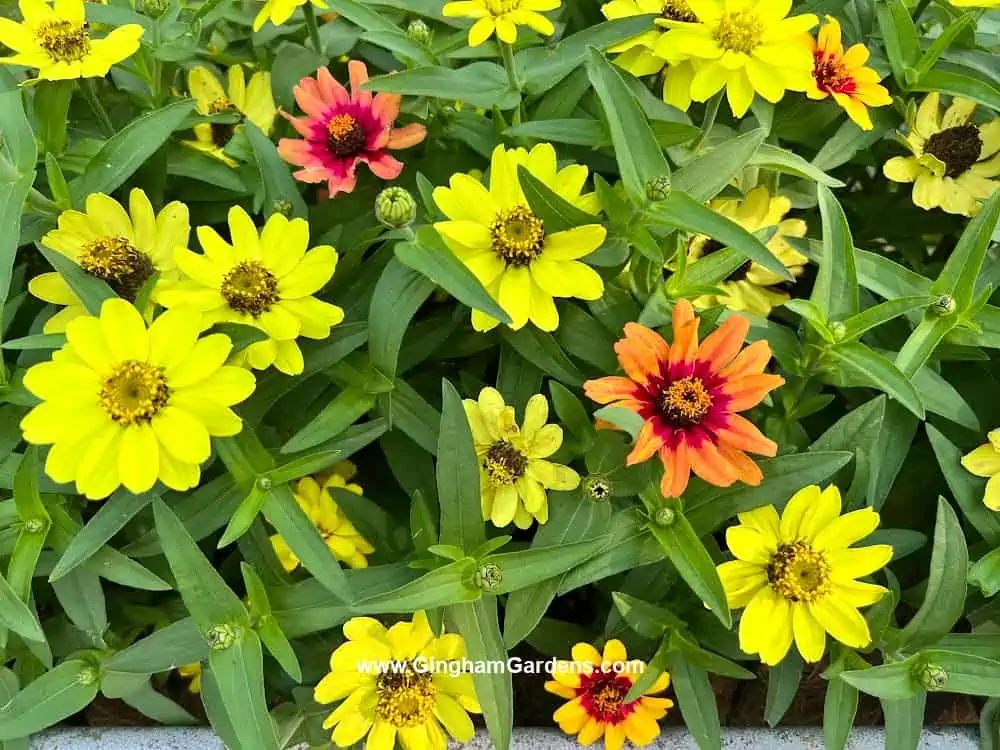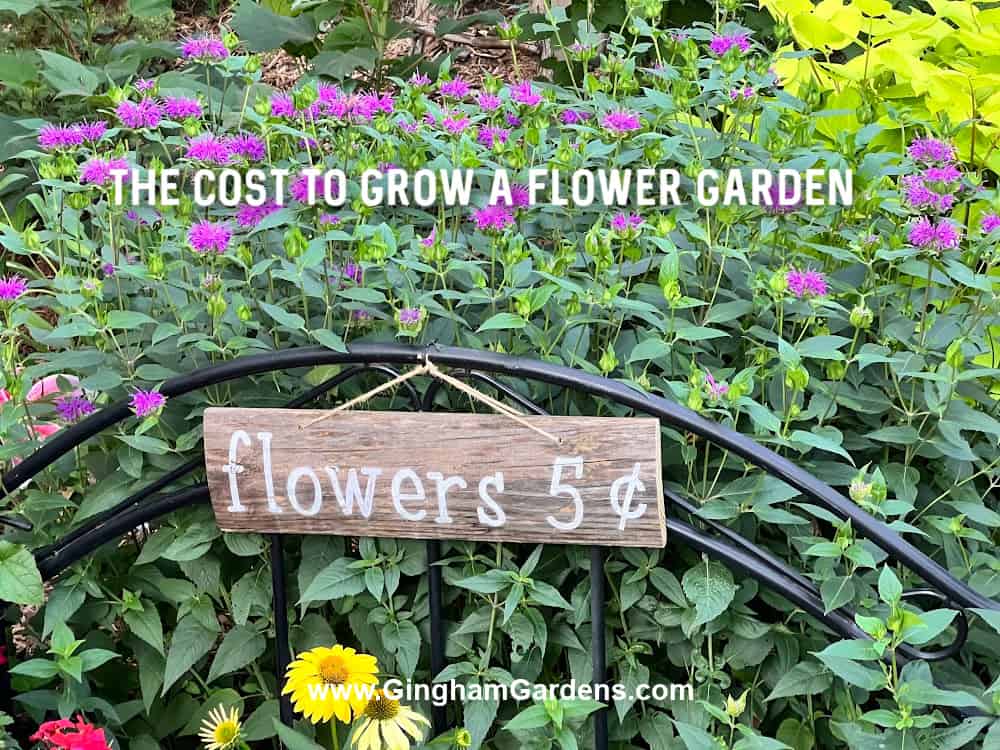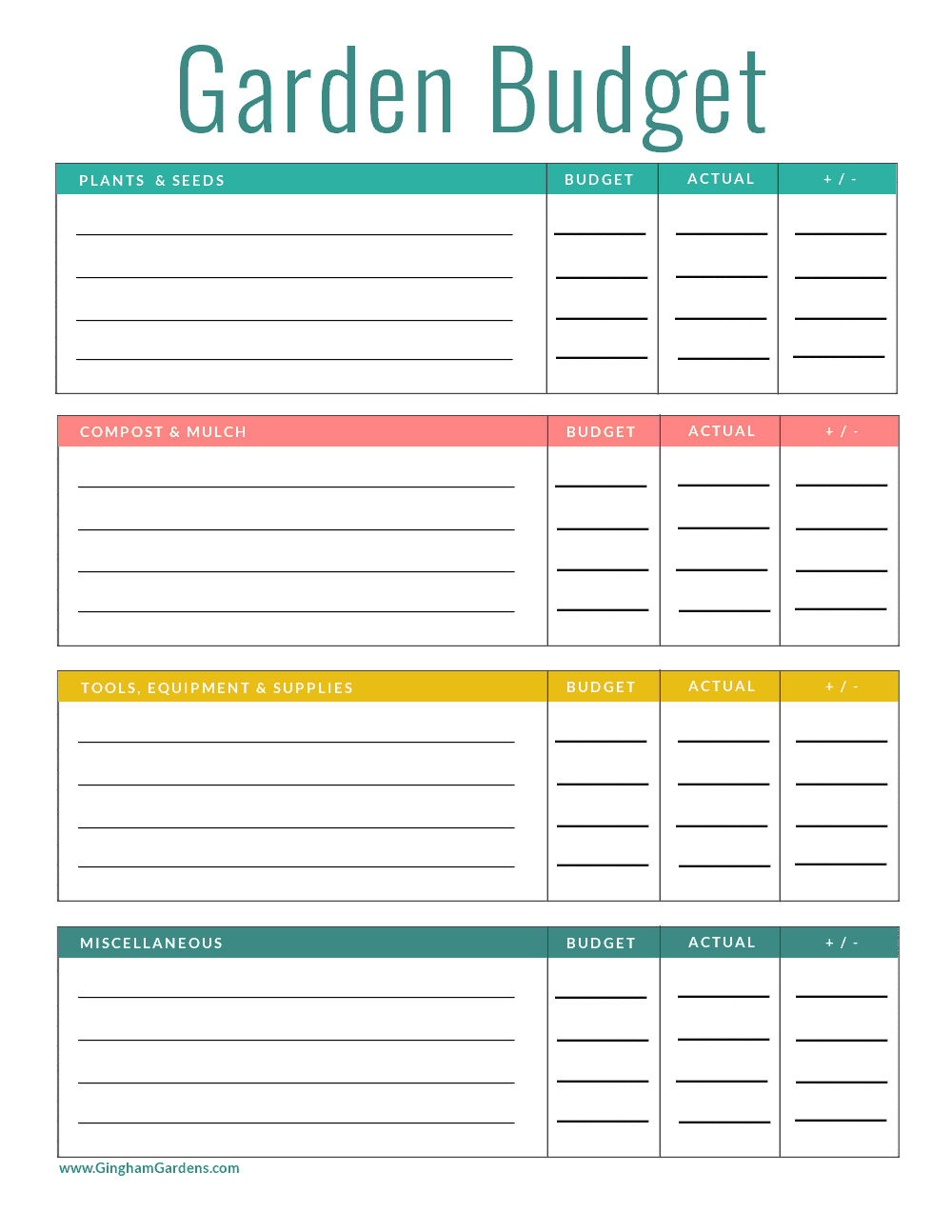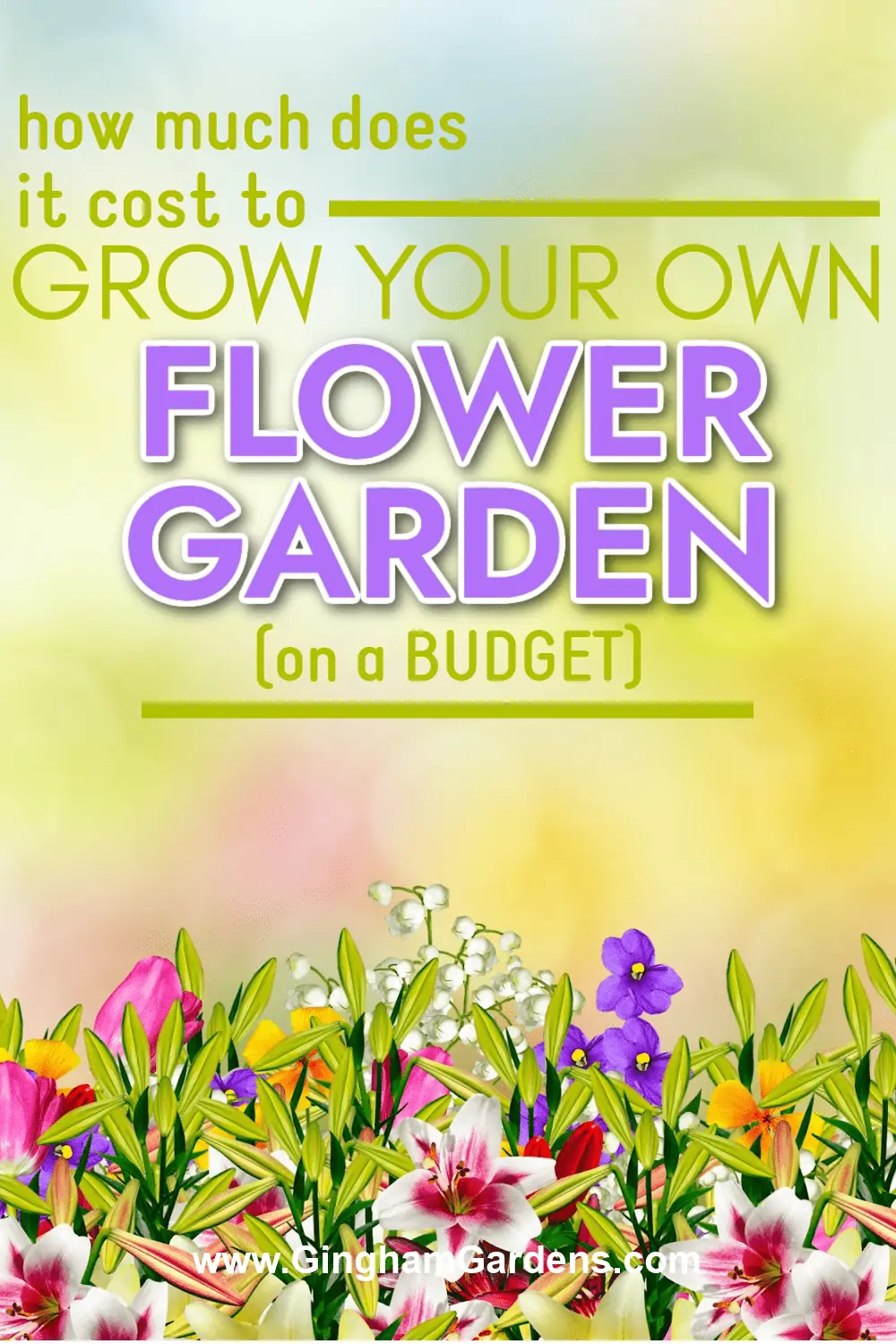The Cost to Grow a Flower Garden
There is no better way to add curb appeal and beauty to your home than with a new flower bed. For the purposes of this post, we are addressing the question of how much it costs to start a flower garden for a homeowner that doesn’t have a huge budget to hire a landscaper, this is strictly for the DIYer. There are many factors to consider when determining the cost to grow a flower garden and we’ll cover those here. Although this post is written with flower gardens in mind, most tips and ideas can also be applied to a vegetable garden.
The first thing to do is work on a budget for your new flower garden bed. The question to start with is how much do you have to spend? Do you only have a couple of hundred dollars or several hundred dollars? If your budget is small, you need to start small the first year and then add on next year and in the following years as your budget allows. If you have a larger budget, you can have a large flower bed, but it’s still a good idea to pace yourself especially if this is your first garden.
This post may contain affiliate links. If you click on
one of the links and make a purchase,
I may receive a small commission at no additional cost to you.
See full disclosure here.
Things to Consider When Figuring Out the Cost to Grow a Flower Garden
Next, take the following factors into consideration and ask yourself these questions:
- What size flower garden do you want?
- Do you want an in-the-ground garden or a raised bed garden? Raised garden beds are more expensive to start with.
- Do you want to have annual flowers, a perennial garden or a combination of both?
- Do you want a flower garden for aesthetics? Or, do you want a simple cut flower garden?
Perennials vs. Annuals – Which are Cheaper
- Annual flowers only live a single season and must be replanted yearly.
- Perennial plants only need to be planted once and can live for up to several years, depending on the type of plant chosen.
- Initially annual plants are cheaper than perennial plants.
- A perennial plant can be divided around its third growing season and then you’ll have new perennials for free.
You will get the biggest bang for your buck with perennial flowers, but you have to be patient because they aren’t as colorful their first season. I believe the best choice for a budget-friendly flower garden is perennials, but I like to add in some annual flowers as well for consistent color throughout the season.

Costs to Consider for a New Flower Garden
When making plans for your new garden, here are the main costs to consider:
Plants and Flowers
If your budget is small, consider starting your garden with seeds. It certainly isn’t instant gratification, but I will let you in on a little secret… plants grown from seeds catch up to plants that you purchase. Take Zinnias for instance; if you direct sow zinnia seeds into your garden and on the same day plant 3-4” starts that you purchased at the garden center, in a couple of months you won’t be able to tell the difference between the plants started from seed or the starter plants you purchased. Seed packets cost between $2-$3 each, whereas a 6-pack of plant starts can run $3 – $5 each. See the great tips below for getting free seeds and /or starter plants.
Compost and/or Soil Amendments
The success of your garden depends on the health of your soil. It’s always good to have a soil test done if you’re gardening in a new space. Contact your local extension office for more information on soil testing. No matter what your soil type, I recommend working some compost into your garden soil before you plant. Or, at least adding a good layer of compost to the top of the soil. Most big box stores like Home Depot have bags of compost for a few dollars each.
Mulch
I highly recommend that you never skip mulching a garden. A good shredded wood mulch is the best way to create a weed barrier and helps the soil retain moisture. As it ages it breaks down adding organic matter to improve your soil. Mulch can be one of the most expensive parts of gardening. But you know what, it doesn’t have to be. If it is not in your budget to add mulch to your new garden, you can use organic material like untreated grass clippings and/or shredded leaves. See the tips below for getting free mulch.
Garden Tools
You will need garden tools. Your best bet is to ask neighbors, family members or friends if they have tools you can borrow. Garage sales are a great way to find used quality tools at a fraction of the price of new ones. A good idea is to set aside money from your gardening budget to purchase one good garden tool a year. Don’t just buy the cheapest thing you can find to get by, as those tools typically won’t last more than a few years.
Water and Watering Equipment
You will need to budget and plan for watering your new garden. If you’re starting with a small garden, you can start with a basic hose. It’s important to note that new gardens and newly planted flowers need to be watered on a regular basis. Be sure you get a hose that is long enough to reach your garden. I recommend doing a little research on hoses. I’ve wasted so much money buying cheap hoses and I wish I’d taken the time to do the research upfront and purchased a good-quality hose the first time. Check out this post for more money-saving tips on watering your garden.
Gardening Supplies
Don’t forget to budget for gardening supplies; like fertilizer, pest repellant, plant labels, edging, stakes for tall plants, etc. It’s easy for your supplies to blow your budget if you don’t plan for them at the beginning.
Other Gardening Expenses to Consider
What about garden décor or yard art? I realize it seems silly to include this, but if you like garden decorations it’s best to add this extra cost to your budget. I recommend for the first year if you can afford it, just setting aside cash and then shopping for these items at thrift stores and garage sales. You can add lots of character to your garden with natural elements like driftwood, field stones, logs, tree branches, etc. It just takes a little creativity.
Get your printable copy of the Garden Budget worksheet in the Gingham Gardens’ Gardening Resources Library by completing the form below.
Pro Tips for Getting Free or Cheap Seeds or New Plants
- Check into a seed exchange in your area. Start with local gardening groups on Facebook. Oftentimes gardeners that have excess seeds are happy to share their bounty with new gardeners. You can also get free or cheap plants from the same groups.
- If you know a gardener that starts their own flower and vegetable annual plants from seed, oftentimes they have more than they can use and are happy to give those plants away.
- For free or inexpensive plants, check Craigslist or Facebook Marketplace; or neighbors, friends or family members that have gardens. Freecycle may also be a good source, but I haven’t tried it.
- Watch for plant sales in your area. There are many master gardeners and experienced gardeners that sell their excess annual plants and perennial divisions from their gardens. You will find much better prices at those sales.
I wouldn’t be a responsible garden teacher if I didn’t warn you to be careful when accepting free plants. Many times gardeners will give away aggressive or invasive perennials and you definitely don’t want those in your garden. This is an important factor to keep in mind, and if flower gardening is new to you, please read this post before accepting free perennials from anyone.

For more great tips for budget friendly gardening see this post.
The Cost to Grow a Flower Garden – Budget Scenarios
Let’s say you only want to spend $200 on your first garden. For purposes of this exercise, we’ll use the approximate measurements of a small 5” x 6” flower bed. So that would be approximately 30 square feet.
- Bagged compost 15 bags @ $3/per bag = $45
- Tools = $40
- Garden Hose & Nozzle = $30
- Fertilizer and other Garden Supplies = $15
- Mulch 10 bags @ $3/per bag = $30
- Money left for Plants = $40
- The total cost for this garden scenario would be $200.
If you have a tight budget, this scenario can be reworked.
- Instead of purchasing bagged compost, if you have someone that has a truck or a trailer, you can purchase compost by the yard for a great price and its usually cheaper than bagged compost. Do the math though. Better yet, see if your county has a free compost site.
- So instead of spending $45 for compost, let’s say you get it for free. Compost = $0
- See if you can borrow gardening tools for this year. Start thinking about next year though and see if you can’t pick up a few garden tools at yard sales. Tools = $0
- You will still need a good garden hose and nozzle, so let’s leave that expense in. Garden Hose & Nozzle = $30
- Likewise, let’s leave in fertilizer and garden supplies = $15
- Mulch is another area where you can save money. Just like with compost, mulch is cheaper if you can purchase it in bulk. Likewise, many counties have free mulch at their compost sites. As an alternative to shredded wood mulch, you can use untreated grass clippings and/or shredded leaves. Let’s say you’re lucky and you will not need to purchase mulch for your garden. Mulch = $0
- You can see how if you do your homework and ask around, you will be able to free up cash for your plants and flowers.
For lots more ideas for gardening on the cheap, check out this post.
If you are new to gardening and need more help, be sure to check out: Flower Gardening 101 and/or Vegetable Gardening 101.
So what is the cost to start a flower garden? I hope after reading this post and doing some of your own calculations you will be able to answer that question for yourself. Yes, you can have a beautiful flower garden with a small budget and a lot of work. Flower gardening is not always instant gratification, but every year your garden will become more of what you want and you will learn more as you continue to garden.
Happy gardening,
Joanna
More places to find Gingham Gardens:
- Visit Gingham Gardens on Pinterest.
- If you’re on Facebook, Gingham Gardens is also on Facebook.
- Stop by Gingham Gardens’ Amazon store!
- Love Etsy? Come see us on Etsy too.
Pins to Save to Your Favorite Gardening Board:




